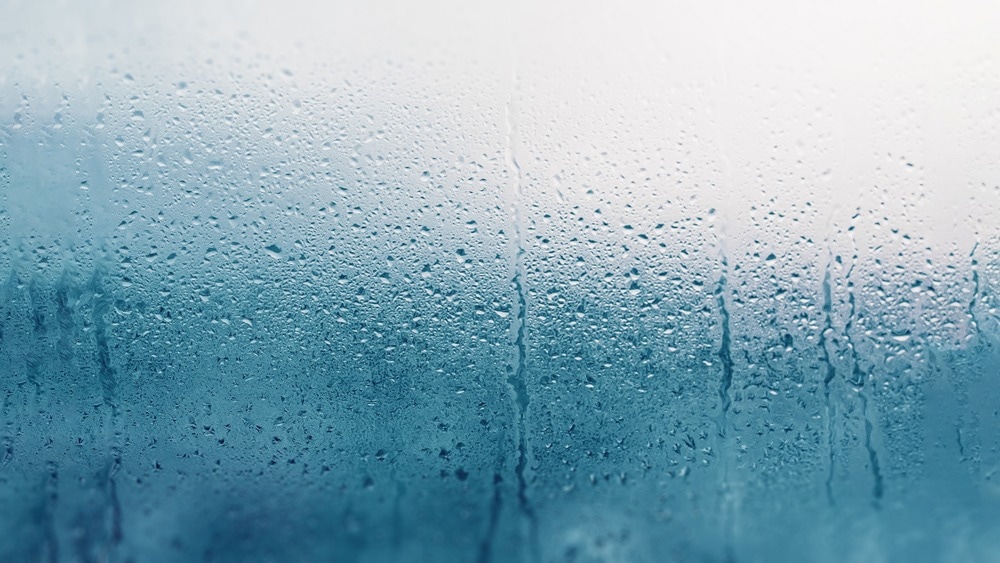Fiber-optic sensors for accurate and quick humidity monitoring have aroused significant interest in many sectors due to their exceptional characteristics. However, balancing the humidity responsiveness, selectivity, temperature interference, and wet hysteresis of these fiber-optic sensors for real-world systems remains a significant issue.

Study: Polyelectrolyte/Graphene Oxide Nano-Film Integrated Fiber-Optic Sensors for High-Sensitive and Rapid-Response Humidity Measurement. Image Credit: PRO Stock Professional/Shutterstock.com
A recent study published in the journal ACS Applied Materials & Interfaces addresses this problem by proposing novel fiber-optic sensors for rapid humidity sensing. These fiber-optic sensors are created by depositing a multifunctional graphene oxide (GO)/polyelectrolyte nanocomposite layer over a tilted fiber grating (ex-TFG).
Fiber-Optic Sensors for Relative Humidity Measurement
Many industries, including pollution management, medication storage, precise production, and sustainable agriculture, need accurate relative humidity (RH) measurements. As a crucial component of RH measuring equipment, relative humidity sensors have drawn great interest from the academic and industrial communities.
Several RH detectors based on electrical, optical, acoustic, and near-infrared approaches have been investigated recently. Fiber-optic sensors have been extensively used to detect relative humidity due to their important advantages, such as anti-electromagnetic interaction, chemical resistance, remote functioning, and compact size.
These exceptional characteristics of fiber-optic sensors are ideally suited for constructing a decentralized RH monitoring framework in harsh atmospheric conditions. Therefore, many real-world applications urgently need fiber-optic sensors with a broad RH range, high responsiveness, quick response, minimal wet hysteresis, and temperature interference.
However, there is always an inescapable trade-off between these performance criteria, resulting in a decline in the effectiveness of RH sensors.
Enhancing the Performance of Fiber-optic Sensors
The fiber structure has a significant impact on the effectiveness of fiber-optic sensors. Using conventional fibers such as hetero-core, etched, and side-polished fibers results in substantial optical loss, compromising the sensors' resilience, ease of operation, and reproducibility.
The excessively tilted fiber grating (ex-TFG) is helpful for many novel detection techniques compared to the micro-structured optical fibers because of its facile interactions with the surrounding medium and remarkable responsiveness to external conditions.
Due to its unique cladding-mode correlation and temperature indifference, the excessively tilted fiber grating (ex-TFG) can also be conveniently used for multifunctional detection systems such as strain, polarimeter, and biological sensing it is ideal for use in RH measurement sensors.
Graphene Oxide: The Future of Fiber-optic Sensors
The hygroscopic covering greatly influences the dehydrating qualities, surface adherence on fibers, morphology, and optical characteristics of fiber-optic sensors.
Graphene oxide (GO) has piqued the attention of researchers as a moisture-sensitive substance because of its high surface-area-to-volume relation and good absorption characteristic across a broad wavelength range. More crucially, graphene oxide layers have abundant oxygen-coating groups, allowing for rapid interaction between water droplets and graphene oxide sheets.
However, it is easy to slip off the fiber interface because of the weak molecular bonding, so the durability and endurance of the fiber-optic sensors cannot be assured. Polyelectrolyte-based polymers, such as polyacrylic acid (PAA), have recently been employed in combination with graphene oxide to circumvent this limitation and achieve high hydrophilicity and fast absorption and dissociation.
Highlights of the Current Study
In this study, the researchers hypothesized that the integration of ex-TFG and responsive graphene oxide (GO)/polyacrylic acid (PAA) nanocomposite moisture-sensitive sheet could lead to the growth of an excellent and well-balanced fiber-optic sensor for humidity measurement. It also offers a distinct possibility to explore and illustrates the efficacy of moisture-sensitive substances.
The researchers produced fiber-optic sensors with high sensitivity, fast reaction, low hysteresis, and temperature interferences based on graphene oxide (GO)/polyacrylic acid nanocomposites.
Key Developments
The interface between graphene oxide (GO)/polyacrylic acid composite and the coating resonance mode of the ex-TFG was improved for humidity measurement without compromising the fiber. PAA was employed to construct hygroscopic pathways and offer adherence to the fiber base. Graphene oxide was incorporated into PAA to further increase the hydrophilic nature of the moisture layer.
The fiber-optic sensors constructed in this work had a high sensitivity of 138.7 pm/%RH and a reaction time of fewer than 2 seconds. In addition, they demonstrated excellent stability over long-term continuous testing.
The proposed fiber-optic sensors with multifunctional graphene oxide sheets also provide other advantages, including simple manufacture and low-cost functioning. These sensors can be used to build a particularly useful framework for tracking the humidity of human breath, making them ideal for rapidly detecting respiratory diseases.
Reference
Xia, B. et al. (2022). Polyelectrolyte/ Graphene Oxide Nano-Film Integrated Fiber-Optic Sensors for High-Sensitive and Rapid-Response Humidity Measurement. ACS Applied Materials & Interfaces. Available at: https://pubs.acs.org/doi/10.1021/acsami.2c08228
Disclaimer: The views expressed here are those of the author expressed in their private capacity and do not necessarily represent the views of AZoM.com Limited T/A AZoNetwork the owner and operator of this website. This disclaimer forms part of the Terms and conditions of use of this website.